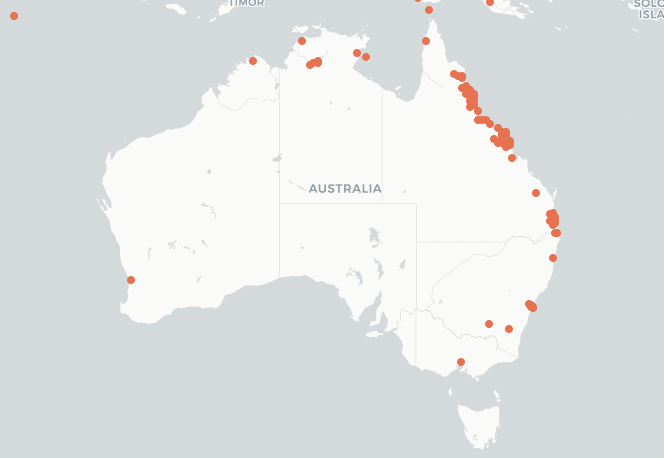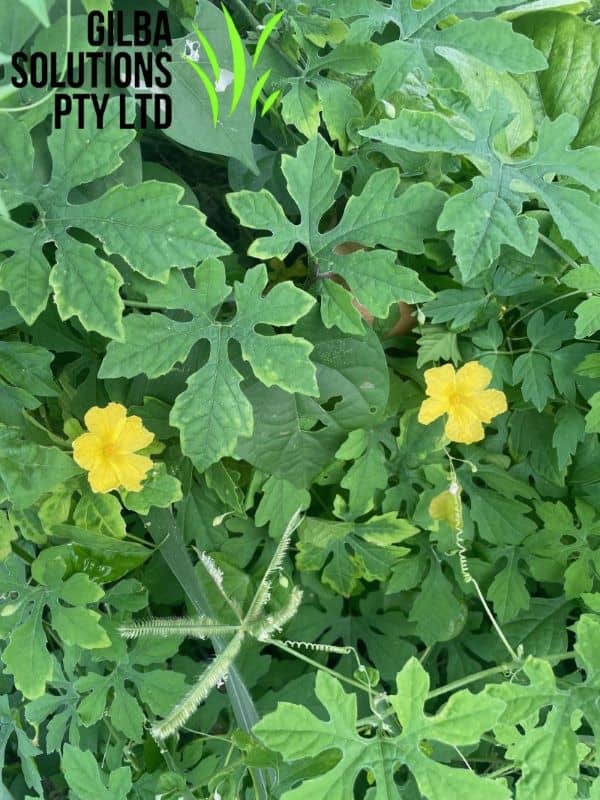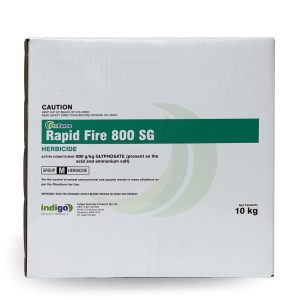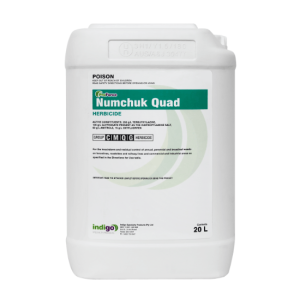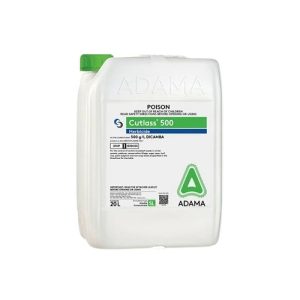Bitter Melon (Momordica charantia).
Bitter gourd (Momordica charantia), is also known as the Bitter Melon plant or the Balsam Pear. It is an aggressive, climbing vine that has become a problem in many parts of Australia.
While it is grown as a vegetable in some countries, in Australia it tends to quickly spread. It then smothers other plants, and competes with both crops and native species.
What is Bitter Gourd?
It is a climbing vine from the cucumber family. The Balsam Pear produces bright yellow flowers that are about 2 cm across. It has distinctive a green, warty fruit that splits open to reveal bright red seeds when the fruit matures.
Key Features of Bitter Gourd
-
It has a climbing, twining growth habit that smothers other plants.
-
Bitter Melon has lobed leaves that look like the leaves of a cucumber plant.
-
It produces bright yellow flowers and then an elongated, bumpy fruit.
-
The fruit of the Balsman Pear turns orange, and then bursts open when it is ripe.
Where Bitter Gourd Grows in Australia.
This weed thrives in tropical and subtropical regions. In Australia, it is common in:
-
Northern QLD.
-
NSW.
-
NT.
How to Identify Bitter Gourd.
Appearance of The Leaves, Flowers, and Fruit.
-
Leaves: The leaves are deeply lobed, light green, and look like cucumber leaves.
-
Flowers: You see its small, bright yellow flowers in the Summer months.
-
Fruit: The fruit is green and bumpy. It turns orange as it ripens and splits.
Lifecycle and Growth Habit.
- Bitter Gourd grows rapidly in warm weather.
- It germinates from seed in the Spring, and spreads vigorously through the Summer.
- It reproduces mainly by seed.
- Birds tend to spread the seed into new areas.
Common Areas Where Bitter Gourd Thrives.
-
Along fence lines, irrigation systems, and in disturbed soils.
-
Along the edges of sports fields, golf courses, and unmanaged turf areas.
Why Bitter Gourd Is a Problem
This weed is considered an invasive weed because it:
-
Grows in a wide range of soils (pH 4.3 to 8.7) and rainfall zones (500 to 4,000 mm/year).
-
Germinates, flowers, and sets seed in just 30 days.
-
Produces a long taproot and spreading roots. These make it hard to pull out.
-
Outcompetes crops and ornamentals for light, water, and nutrients.
-
Bitter Melon seeds can survive in the soil for up to 24 months.
Bitter Gourd Management.
A. Cultural Control (mowing, removal, prevention).
-
Hand-pull or cut: Remove plants close to the ground. This makes sure that the taproot and stems don’t re-root.
-
Dispose carefully: Bag fruit and plant material or hang it off the ground. This stops the spread of any of the seeds.
-
Repeat: Monitor and remove any reegrowth to stop further seed production.
B. Herbicides for Bitter Gourd.
- Currently, flumioxazin is the only herbicide with a label for the Bitter Gourd plant in Australia (APVMA Permit PER11463).
- Trials in sugar cane fields have also shown success with mixes such as fluroxypyr + 2,4-D. These trials gave up to an 83% control.
- Other herbicides used overseas include glyphosate, dicamba, and triclopyr.
C. Non Selectives For Bitter Gourd.
- The non-selective herbicide Glyphosate, controls this weed. However, there are reports of herbicide resistance overseas.
- If you use Glyphosate and water quality is an issue then use ProForce Manta Ray.
- Other Non selective options to look at are Numchuk Quad and Cortex Duo.
- Both of these are great knockdowns but also have a long term residual of up to 12 and 3 months respectively. These are ideal for use along fencelines or around buildings.
Integrated Management for Long-term Success.
For long-term results, use an integrated approach:
-
Physically remove plants before they set seed.
-
Use herbicides to control any re-growth.
-
Monitor the site for at least two years to make sure that you exhaust the seed bank.
-
Practice good sanitation, e.g., remove any fruit early to stop its spread.
For broader weed strategies, see our Weed ID Chart and our Guide to Integrated Weed Management.
Key Takeaways
-
Bitter gourd is a fast-spreading invasive vine in Australia.
-
It is adaptable, short-lived but highly reproductive, and very difficult to control if it is left unchecked.
-
You get the best control with a combination of cultural practices and approved herbicides.
-
Early detection and consistent management are essential to stop its spread.


